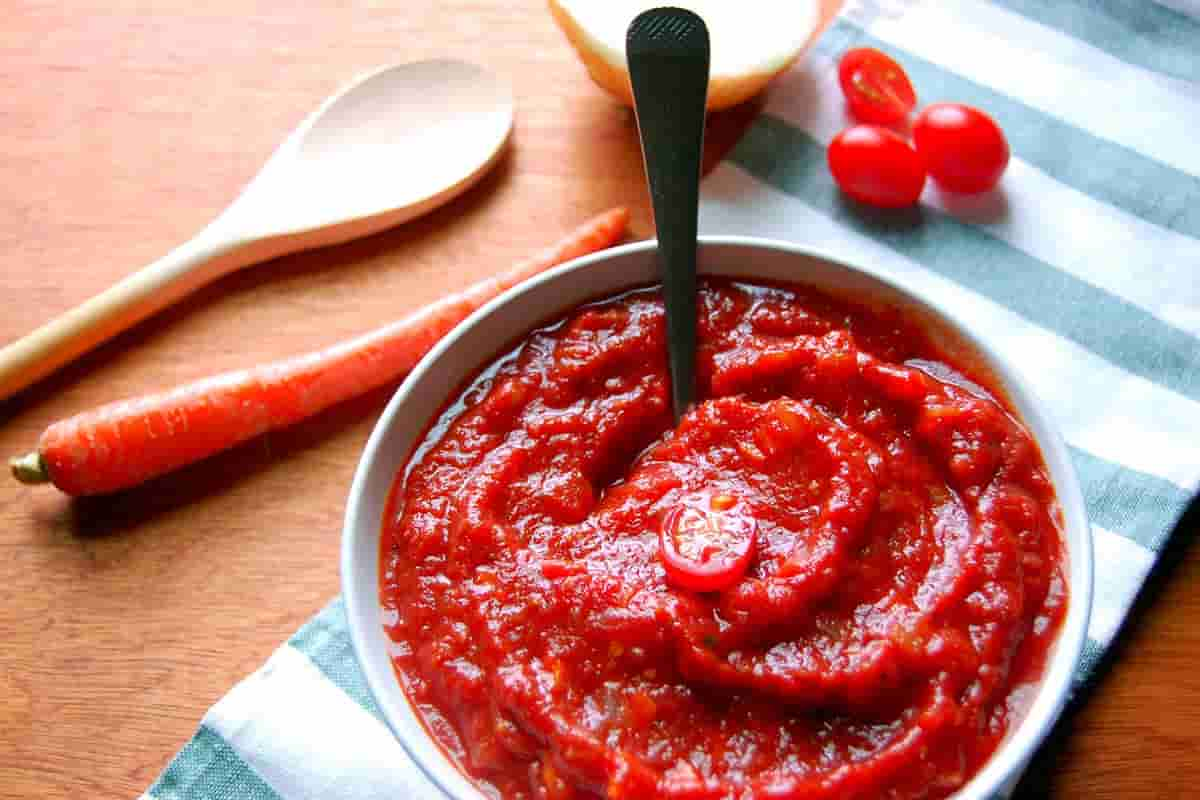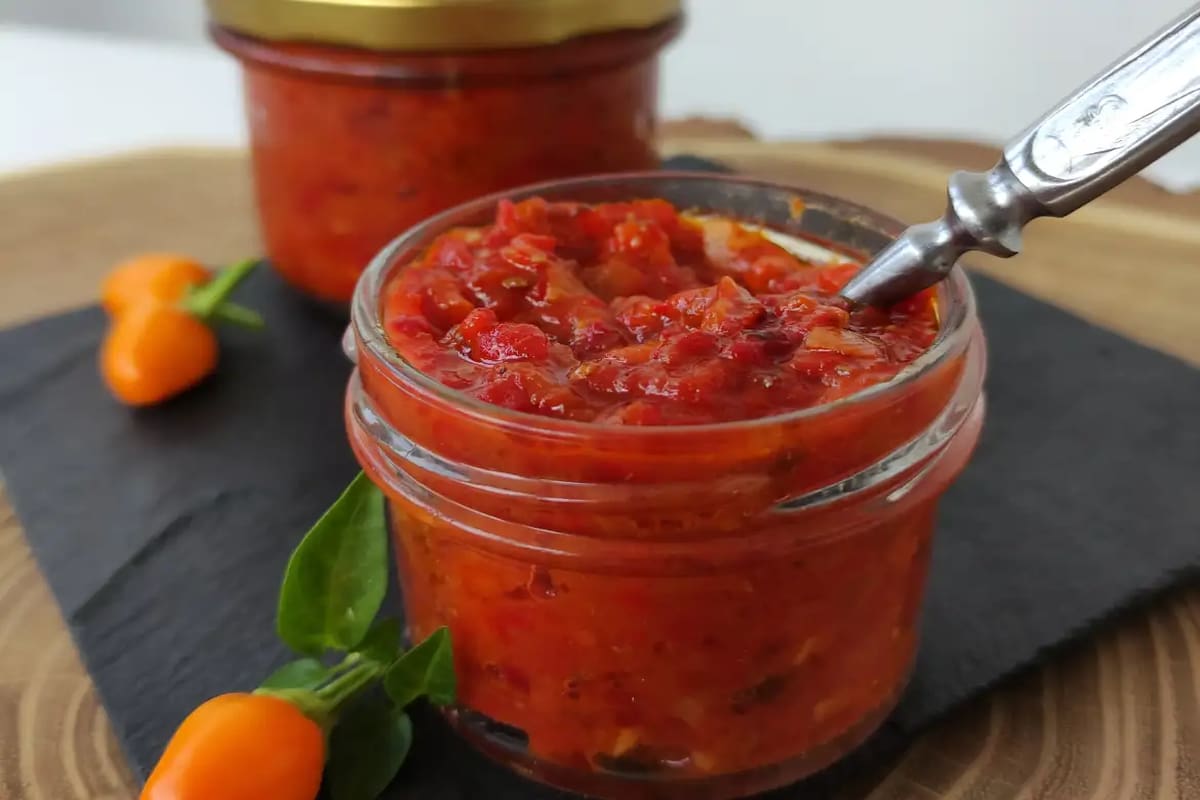As tomato paste may not always be available, you need to get familiar with substitute options for this product. As you already know, tomato sauce and other relevant tomato-based products can be regarded as good alternatives and the following information can be so beneficial for analyzing their uses.
Fresh tomatoes are used in the preparation of tomato paste. The tomatoes are first boiled down for a number of hours until they become a very thick, dark crimson paste.
First, the tomatoes are heated to remove some of the moisture that is contained inside them, then they are strained to remove the skins and seeds from the tomatoes, and finally, the tomatoes are cooked once more to reduce them even further, resulting in a thick, brick-red paste.
To put it another way, tomato paste can be thought of as a highly concentrated form of tomato sauce.
The color, consistency, and flavor of tomato sauces, as well as soups, chilis, and stews from all over the world, can all be improved with the addition of tomato paste.
Tomato paste is used in many Italian cuisines. It is often sold in cans, jars, or resealable tubes; however, resealable tubes are typically the most convenient alternative because they help prevent mess and waste.
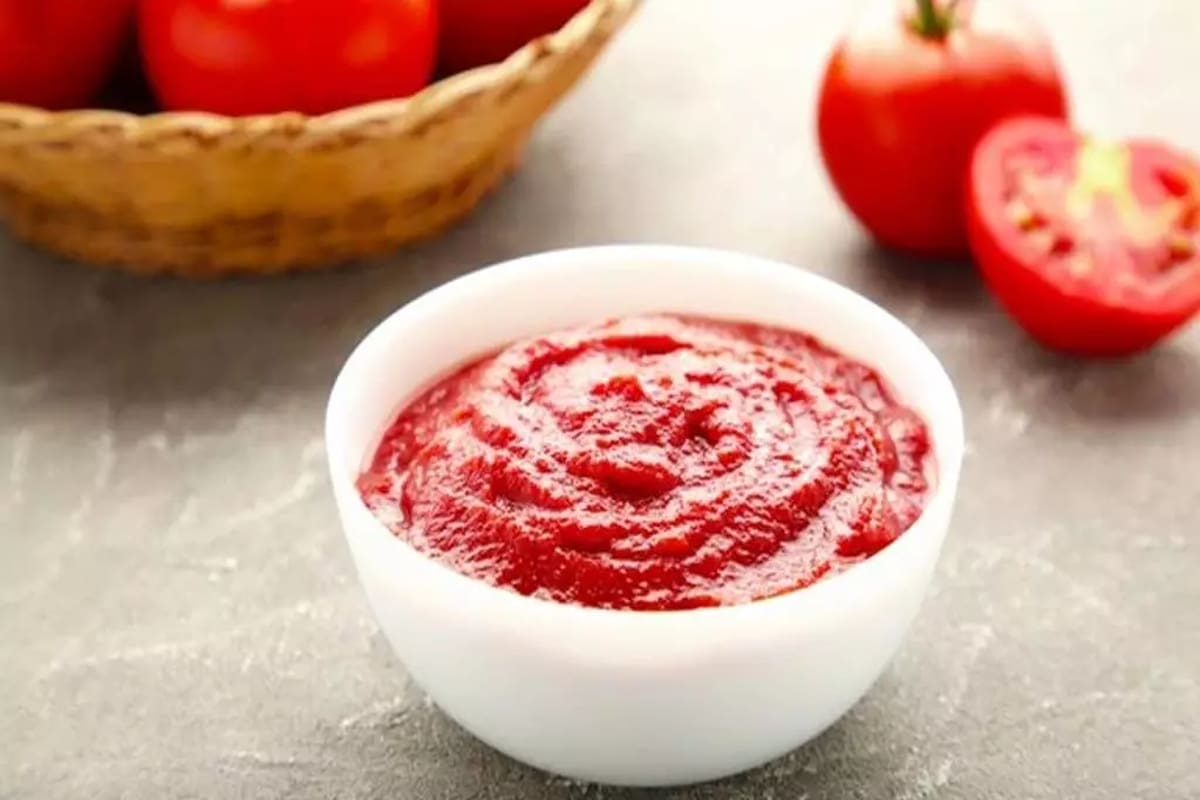
In addition, you can make homemade tomato paste with fresh summer tomatoes and savor its savory flavor all during the colder months of the year.
If you find yourself in a position where you require tomato paste but do not have any on hand, there is no need to rush to the next grocery store to buy any. It’s likely that you already have a good alternative stashed away in your pantry. You could also require an alternative to tomato paste if you have an allergy to tomatoes or have acid reflux while consuming foods that are based on tomatoes, such as tomato sauce or tomato-based pasta.
Despite tomatoes’ status as one of the most widely consumed foods in the Western diet, food allergies to them are extremely uncommon. A skin rash or hives, abdominal cramps, nausea, vomiting, or diarrhea, coughing, sneezing, and swelling of the face and throat are some of the symptoms that may be experienced.1
Get in touch with a medical professional who specializes in allergies if you are concerned that you could have an allergy to tomatoes. The presence of an allergy can be verified in a number of different ways, including by a blood test or a skin prick test.
Tomato paste imparts a robust tomato taste into dishes; hence, you will want to search for an alternative with a flavor profile that is comparable. You could also want to think about the color, seeing as how using tomato paste lends dishes a dark, crimson tone.
Even while you might not be able to precisely replicate the thick consistency with your alternatives, flavor and color are still very significant aspects to consider. If you frequently prepare tomato-based dishes such as sauces, chilis, and stews, you may discover that you go through tubes of tomato paste rather rapidly. Because of this, you should always have other options on hand in case you run out.
Tomato paste does not qualify as an important source of calories, macronutrients, or micronutrients, and thus can be incorporated into a wide range of dietary patterns. It is an appropriate addition to dishes that adhere to diets that do not include gluten, veganism, or vegetarianism.
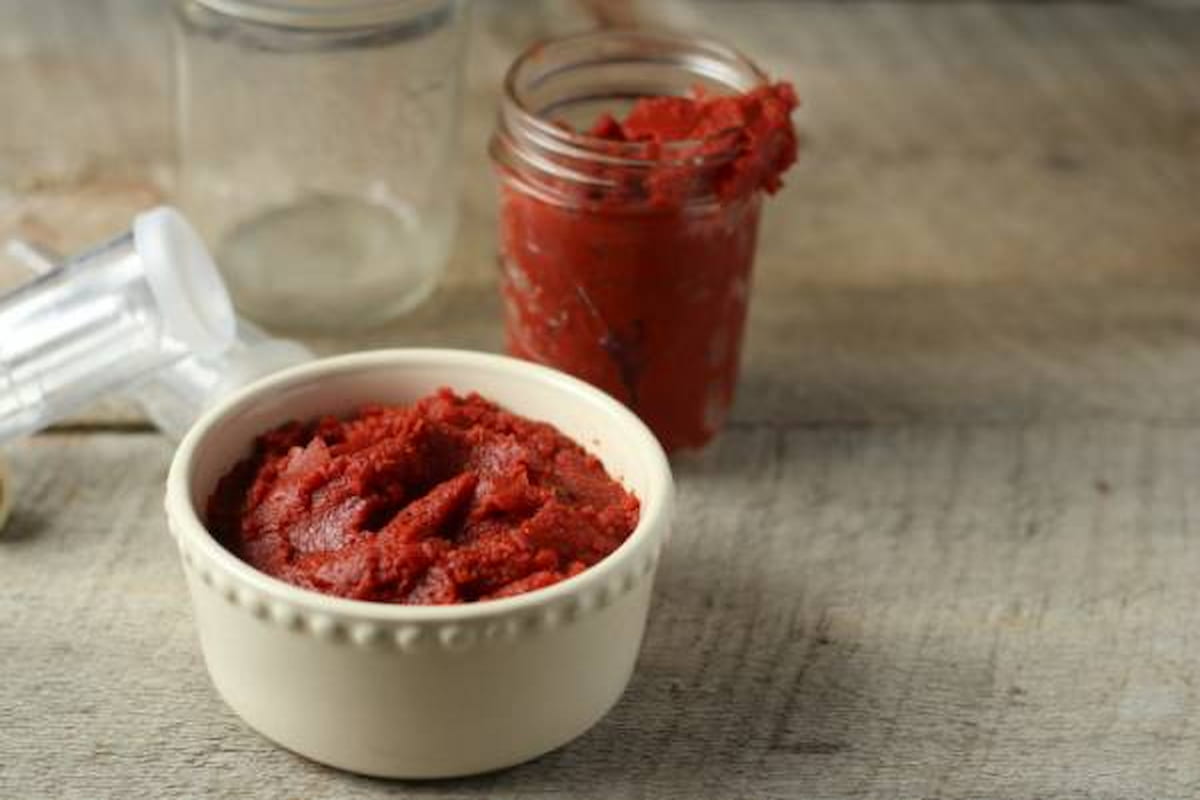
Popular Substitutes
If you do not suffer from any tomato-related allergies, the greatest alternatives to tomato paste are other products that are derived from tomatoes and that you most likely already have in your kitchen. If you use any of these alternatives, you can expect the finished product to have a strong tomato flavor and a red color, even though the consistency may be slightly different. It’s possible that the amounts of each ingredient used will change depending on how they turn out.
Canned tomatoes
Cans of chopped or crushed tomatoes are likely already stored in the kitchen cupboard of anyone who makes their own tomato sauce, stews, or chilis at home. If this describes you, read on. Take your can of crushed tomatoes, drain all of the liquid, and then mash the tomatoes into your dish while it cooks. That’s all there is to it!
When compared to tomato paste, canned tomatoes have a runnier consistency, which results in a less concentrated flavor. As a result, you will require more canned tomatoes. To achieve the correct consistency, begin by adding one tablespoon of tomato paste for every two teaspoons of canned tomatoes. Continue this ratio until the desired consistency is achieved.
Tomato Sauce
There are a lot of other uses for the bottled tomato sauce that you have in your cabinet besides simply pouring it over pasta. If you simmer the meal for some time, the sauce will thicken up and become more like tomato paste. At first, the consistency may be on the runnier side, and the flavor of the tomato may not be as intense as it could be.
Tomato sauce purchased in a jar may also have additional seasonings, such as basil and garlic, which, depending on the dish you are preparing, you may or may not want to include. You will need to tweak your ratio so that it is comparable to that of canned tomatoes, using 2 tablespoons of pasta sauce for every 1 tablespoon of tomato paste, and continuing to do so until you achieve the right consistency.
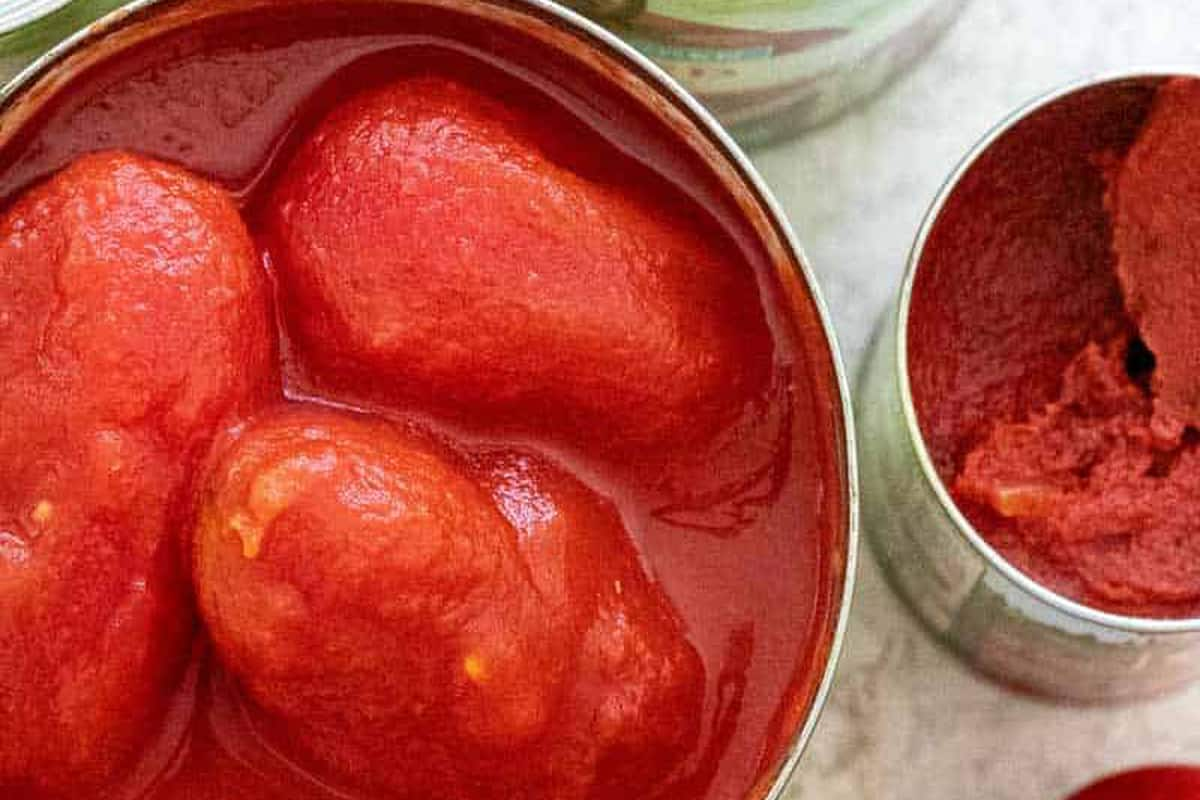
Ketchup
Although ketchup is not quite as thick as tomato paste, it is considerably more viscous than tomato sauce, which makes it an excellent stand-in for tomato paste. It also provides a tanginess and sweetness, which, depending on the recipe you are preparing, may be desired. The tanginess comes from vinegar, while the sweetness comes from sugar.
For instance, chili does not just rely on tomato paste as a thickener. Additionally, the tangy flavor of ketchup may complement other ingredients in the chili. Tomato paste can be replaced with ketchup in a ratio of one part ketchup to one part tomato paste.
Given the amount of ketchup you are most likely to consume, it does not constitute a substantial source of any type of nutrients.
If you are sensitive to tomatoes or the tomato flavor is not essential to the dish you are preparing, roasted red peppers are an acceptable substitute. You may get it in a jar, or you can roast the nuts yourself and then purée them in a food processor.
They will lend a splash of color and a burst of flavor to the dish, but their consistency will not compare to that of tomato paste. Use roasted red pepper puree in the same quantity as tomato paste, but keep in mind that you may need to lower the amount of liquid in your meal in order to achieve the desired consistency.



